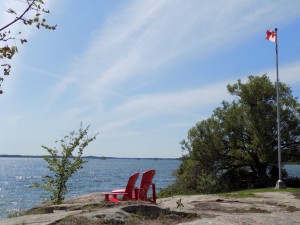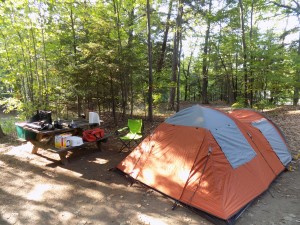A boatless person’s tour of the Canadian Thousand Islands
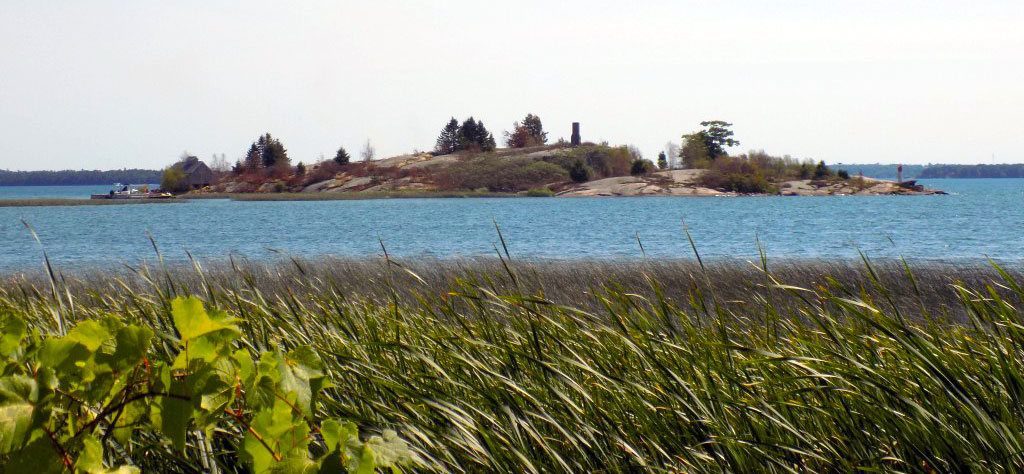
Chimney (Bridge) Island was a British fort during the War of 1812. The only thing still standing over 200 years later is appropriately–a chimney. Photo by James Morgan
All of my camping trips to the Thousand Islands have been on the Canadian mainland. Recently, I headed west on the Thousand Islands Parkway, one of Ontario’s few official scenic parkways. The 24 mile/39 kilometer route runs from just west of Brockville to Gananoque, giving many attractive vistas of the St. Lawrence River, the islands, along with several natural and historic features such as Chimney (Bridge) Island and Singer Castle.
I stopped at the Thousand Islands National Park visitor center at Mallorytown Landing. The park was called St. Lawrence Islands National Park until 2013. The name change made sense. After all, there are many more islands in the big river than just the Thousand Islands. It is Canada’s smallest national park at just 9.5 square miles/24 square kilometers, spread over all or part of 21 islands.

Snakes take a long time to digest food. Willow was still recovering from Sunday dinner on Wednesday morning. Photo by James Morgan
A friendly park interpreter named Samantha showed me Willow, a Grey Rat Snake. The rough terrain of the Thousand Islands is one of the only significant habitats of these non-poisonous snakes. In the US, they’re called Black Rat Snakes, but wildlife experts in Canada have found slight differences in the species north of the border—including a lighter color, so they’re now called the Grey Rat Snake in Canada. The visitor center area has a great children’s exhibit about learning to camp, and the view from the rocky lookout is beautiful. There are short trails through the nearby forest at Mallorytown Landing, and at Jones Creek near the eastern end of the parkway. There’s also a popular cycling path that follows the entire parkway route. Most of the park’s islands have campsites and boat docking facilities.
For a land camper like me, I set up my tent at Ivy Lea Park, operated by the St. Lawrence Parks Commission, an agency of the Ontario government. It also operates the beach and picnic area at Brown’s Bay and the new Skywood tree walking and zipline attraction. The Canadian Thousand Islands are a bureaucratic place, with a patchwork of federal and provincial responsibilities for their conservation.
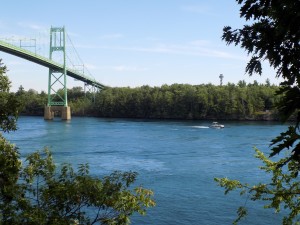
The Canadian span of the Thousand Islands Bridge and Georgina Island. The 1000 Islands Tower on Hill Island is in the distance. Photo by James Morgan.
Ivy Lea is a small park, and much of it is right underneath the Canadian span of the Thousand Islands Bridge. It’s a beautiful place but the continuous sound of semi-trucks changing gears and rumbling engine breaks up on the bridge kind of spoils the natural experience. Nonetheless, I relaxed in my chair, listened to The Radio Bob Show, and looked across at Georgina and Constance Islands, which are part of the national park.
Early the next morning, it rained heavily. I don’t like packing up a wet, dirty tent, but I didn’t have any choice. I continued west on the parkway and passed Landon Bay and Halstead Bay. Landon Bay is part of Thousand Islands National Park but for decades the campsites and trails were managed by a not-for-profit foundation. Their licence expired last year and they decided to hand operations back over to Parks Canada. I had a chat with Park Superintendent Jeff Leggo and Public Relations Officer Bruce MacMillan. They told me that over the next few years, the facilities at Landon Bay will be significantly renovated and the area will eventually re-open for campers and hikers, offering more mainland recreation opportunities for boatless people like me. Even at the present time though, it’s quite easy to enjoy the Canadian side of the Thousand Islands from the mainland.
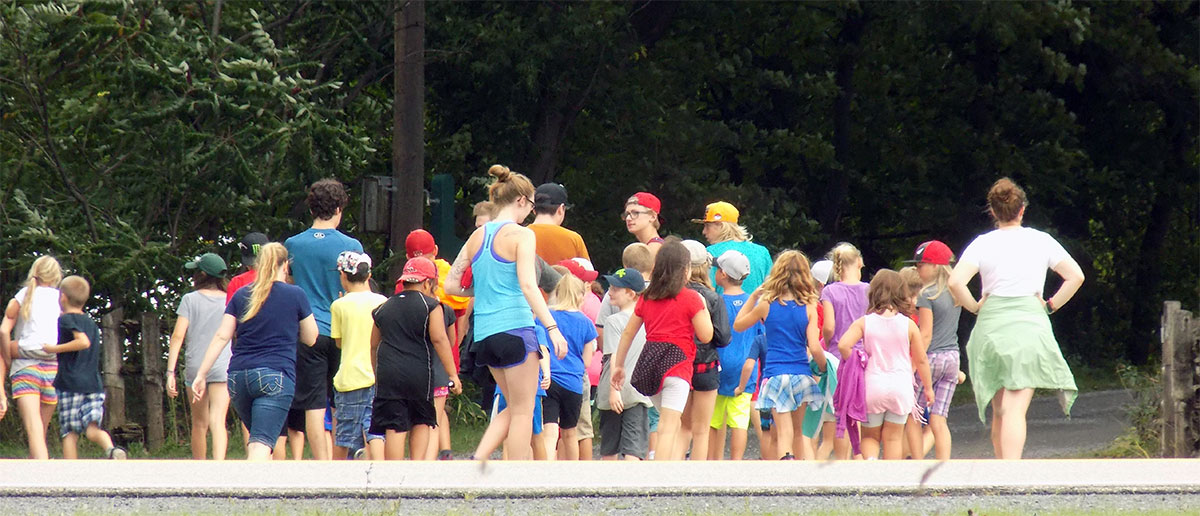
Landon Bay is the summer home of youth recreation programs in the township of Leeds and the Thousand Islands. Photo: James Morgan
Tags: canada, Ontario, parks, recreation, Thousand Islands





